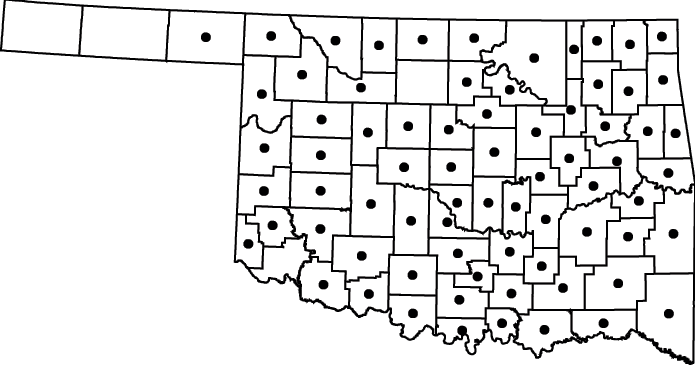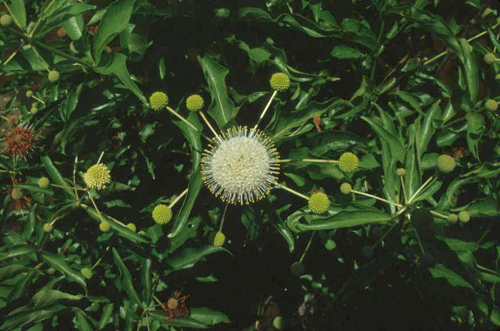|
|
Wetland and Aquatic Plants
of
Oklahoma
Interactive Keys: Woody
Shrubs and Vines
2.
Leaves Opposite
Madder
(Rubiaceae)
Buttonbush
(Cephalanthus
occidentalis
L.)
Native
perennial.
click
thumbnail
to
enlarge


Note: The flowers
are a nectar source for hummingbirds, butterflies, bees, and other insects. The
seeds are eaten by several species of waterfowl,
shorebird, songbird
and upland gamebird. Buttonbush also
provides nesting habitat and cover along the wetland periphery. The dense, white "button" of
flowers make it an attractive ornamental. Buttonbush
can tolerate up to 45 days of inundation. The
Choctaws used a preparation from
buttonbush to treat diarrhea and toothache. The
kiowa used to treat hemorrhage. The
Seminole to treat diarrhea, stomachache, and
fevers.
NWI status:
OBL
Last update: 2/16/04
Comments to : Bruce Hoagland
bhoagland@ou.edu
Go to Oklahoma
Biological Survey Home Page
 Disclaimer Disclaimer
|

